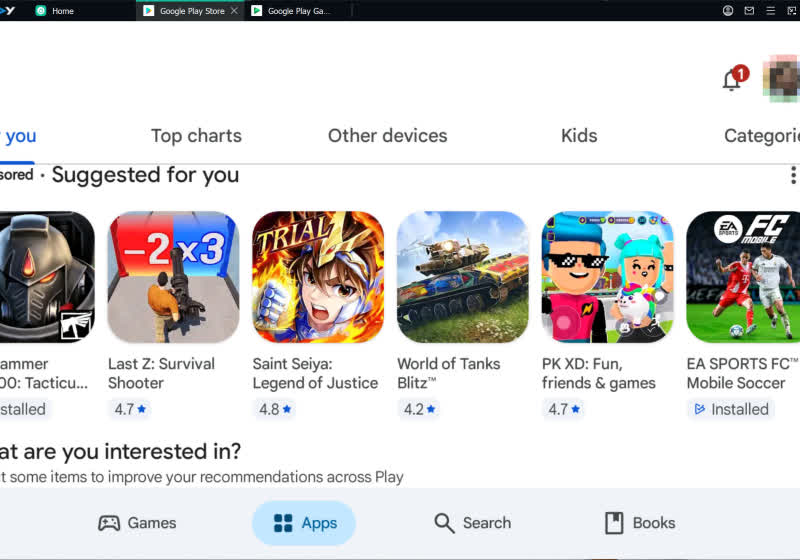Multi-gig plans offer impressive speeds and solid value in terms of cost per Mbps, but the truth is, they deliver more bandwidth than most people will ever use. Even so, these high-speed broadband options are gaining traction. Recent data from USTelecom shows that many people are already leaning toward plans in the 940 to 1,000Mbps range. And with fiber and some cable ISPs now offering speeds above that -- plus Starlink hinting at future 2Gbps capability -- it’s worth asking if you really need that amount of speed. The costs may be alluring, but is it worth splurging for?
Here’s what you should consider before signing up for multi-gig internet at home.
Read more: Yes, There Is Such a Thing As Too Fast. Here's How Much Internet Speed You Really Need.
What is multi-gigabit internet?
Multi-gigabit internet plans have maximum data transfer rates (internet speeds) of higher than one gigabit per second. What does that mean, exactly?
Internet speeds are advertised and measured in megabits per second, or Mbps. According to the latest speed test data from Ookla, average household speeds as of March 2025 was just 287Mbps in downloads and 53Mbps in uploads. (Ookla is owned by the same parent company as CNET, Ziff Davis.) That average is lower than what was reported by OpenVault's third-quarter 2024 report, which noted an average of 564Mbps in download speeds and 31Mbps in upload speeds.
Both averages remain well below gigabit speeds, meaning that the average household really isn't using as much speed as internet providers advertising multi-gig plans would have you think. AT&T's lowest speed tier of 300Mbps is more than enough to support streaming, gaming, working from home and so forth on eight or so devices at once.
If you have more than one gamer in the house, you should consider a gigabit plan.
Getty ImagesThat said, if you have more than two or three internet users in the house consistently using higher-than-average internet speed, a gigabit or multi-gigabit plan might just be the way to go. Plus, we rarely consider the bandwidth our smart devices are using, but you'll need a reliable internet connection to make sure everything from your Ring camera to your Alexa devices is running smoothly while you're streaming Netflix or joining a Zoom call. If you have 20 or more smart devices on your Wi-Fi network, plus higher-than-average internet usage habits, I'd recommend a gigabit plan. For most everyone else, however, that's likely overkill.
Internet providers with multi-gig plans
Another key thing to know about multi-gigabit internet is that most providers use a fiber-optic network capable of delivering symmetrical or near-symmetrical download and upload speeds. Fast upload speeds are less important in the grand scheme of home internet use, but are still nice to have and something you won't necessarily get from a cable, DSL or satellite internet connection.
So far, numerous major ISPs have introduced multi-gigabit internet speed tiers, including AT&T, Frontier, Google Fiber, Verizon Fios, Xfinity and Ziply Fiber. Several regional and hyperlocal providers offer multi-gig plans with speeds up to 10Gbps as well.
Currently, Ziply offers the fastest multi-gigabit plan with speeds up to 50Gbps, or 50,000Mbps, starting at $900 monthly. Here's a look at the fastest multi-gig plans currently available from the largest internet service providers.
Top multi-gigabit plans compared
| $245 | 5Gbps down, 5Gbps up | None | None | None |
| $110 | 2Gbps down, 100Mbps up | $15 (optional) | 1.25TB | None |
| $200 | 3Gbps down, 3Gbps up | None | None | None |
| $150 | 8Gbps down, 8Gbps up | None | None | None |
| $110 | 5Gbps down, 5Gbps up | None | None | None |
| $280 | 8Gbps down, 8Gbps up | None | None | None |
| $150 | 8Gbps down, 8Gbps up | None | None | None |
| $110 | 2.3Gbps down, 1.5Gbps up | None | None | None |
| $300 | 10Gbps down, 10Gbps up | $20 | None | 2 years |
| $900 | 50Gbps down, 50Gbps up | $15 (optional) | None | None |
Show more (5 items)
More multi-gigabit options ahead
Fiber networks have, for the most part, always had the capacity to deliver multi-gig speeds, but many providers have avoided offering them, partly because people didn't need them and the plans were expensive. As we add more connected devices in our homes and the ongoing pandemic drove record numbers of people to work and learn from home, ISPs saw the need, or at least a potential demand, for faster speeds.
With the fiber-optic infrastructure already in place, boosting speeds was a matter of simply flipping the switch for most providers. Before Ziply Fiber's multi-gig launch, company CEO Harold Zeitz told CNET that such high-speeds are in part "why we built the network the way that we did," so that when the time came to roll out multi-gig service, it'd be available to thousands of homes at essentially "the push of a button."
So, are multi-gigabit plans worth the hype?
Depending on the plan you choose, multi-gig service can run well over $100 a month. You get what you pay for -- the speeds are undeniably impressive, but will go to waste for the average home.
Speeds of around 500Mbps should be sufficient for a family of three or four users and all their connected devices, and smaller households with fewer connectivity demands could get by on even slower and cheaper plans. Again, according to Ookla data, the national speed test average as of March 2025 was just 287Mbps in downloads and 53Mbps in uploads. (Ookla is owned by the same parent company as CNET, Ziff Davis).
Furthermore, there's the fact that many devices -- routers, computers, tablets, smartphones, TVs -- are not equipped to handle those speeds. You'll be getting and paying for speeds up to 2Gbps, 5Gbps or higher to your home, but your devices won't achieve such speeds because they simply aren't built with the throughput to support them. You likely won't notice the difference between a 500Mbps plan and a 1,000Mbps plan unless your devices and router support the latest Wi-Fi technology.
Plus, if you're considering upgrading because of an underperforming internet connection, there are easier, more cost-effective steps you can take first. Sometimes the trick to boosting internet speeds in your home is optimizing your Wi-Fi setup, upgrading to a mesh Wi-Fi system or upgrading your router.
Consequently, I would argue that upgrading to a multi-gig service is not worth the added cost. Faster home internet speeds are a good thing, but I'd say, for now, multi-gig speeds may be too much of a good thing.
Multi-gigabit internet FAQs
What is multi-gigabit internet?
Multi-gigabit internet is defined as speeds that go beyond 1 gigabit (or 1,000Mbps). Multi-gig plans can typically boast ultra-high speeds which are much faster than gigabit internet. Multi-gigabit plans can be described as 2Gbps and can reach as high as 50Gbps for Ziply Fiber customers.
What is the best multi-gig plan?
This will all depend on the internet provider, pricing and speeds available at your address. In general, having access to a fiber connection will likely determine if you have multi-gigabit speeds. When it comes to availability, AT&T Fiber has a growing fiber network and is available to over 49% of the country. With AT&T Fiber, you can expect speeds of up to 5Gbps, and it comes with the equipment at no additional cost.
Is multi-gigabit internet expensive?
Yes, a multi-gig internet service is more costly than other plans. It can range from around $80 to as high as $900 a month. For instance, Xfinity and Ziply Fiber boast the fastest multi-gigabit speeds of any internet provider, offering a 10Gbps and 50Gbps plan for $300 and $900 a month, respectively. That's a pretty hefty amount and this is not even considering the monthly equipment fees that may come with service.
If you're looking to invest in a multi-gig plan, Altafiber has a 2-gigabit plan for $80 a month. That's a solid deal, considering the speeds that you'd get.
To learn more, read our top picks for the best multi-gigabit internet plans available.









 English (US) ·
English (US) ·